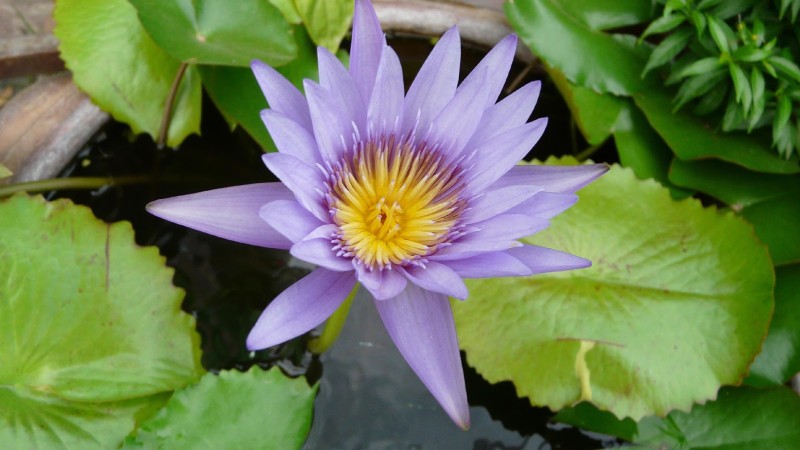This respect is primarily related to rice, the staple food and lifeline of all Thais, and the most important natural contributor to the kingdom’s economy. Why rice? Because successful production of the cereal is reliant on oodles of water: all those hectares of marshy paddies throughout central Thailand are testimony to its dependence on a constant supply of H2O in the growing season from May to November.
But it is not just a tale of rice. Aquatic or marsh-loving plants are also a feature of Thailand’s floral landscape – and to a much greater degree than in Europe or America. Take the lotus (Nelumbo nucifera or lutea ). The national flower of India and Vietnam, though surprisingly not of Thailand, it is a constant presence here, turning muddy lakes into a riot of brilliant colour, or cultivated in water gardens and decorative pots. That is one reason why it is so revered – an object lesson as to how something born in the murkiest of environments can yet transform itself into an object of exquisite beauty. Not only in western myth do frogs metamorphose into princes.
Also central to Buddhist iconography, deities are often depicted seated on a lotus flower; the divine one apparently caused lotuses to burst into bloom wherever he walked. Most important of all, the lotus is one of the eight auspicious signs of Buddha – a symbol of cosmic harmony or spiritual illumination.
I first encountered the plant many years ago in London when I bought the conical seed heads (without realising what they were) for inclusion in an arrangement of dried flowers. These massive heads are truly exotic, resembling the pierced spout of a watering can. But even these are sensationally upstaged by the fat pink or white buds which develop into blooms up to 20cm across.
In the wild, the lotus grows by anchoring its roots (rhizomes) to the muddy bottom of a lake or river up to eight feet deep, while its brilliant green, nasturtium- shaped leaves float on the surface or rise majestically above the water on long brittle stems. Some cultivars are grown exclusively for the glory of their huge white, yellow (lutea) or pink blooms.
So it seems a pity to relegate this marvel to the kitchen garden, even though everything is edible – flowers, seeds, leaves, even the rhizomes. Much better to plant the sacred lotus, Thai style, in waterproof earthenware pots, half filled with the rich, glutinous mud sold at nurseries in plastic bags – and watch them flourish. The container need not be wide but it should be tall, preferably vase-shaped.
A couple of provisos. The leaves may turn brown and rusty-looking at the edges. If so, you can easily remove them. Secondly, and since its natural habitat is rich alluvial slime, it will need frequent doses of proprietary fertilizer. But it is worth the trouble… No Thai patio should be without one.
Dr Patrick Campbell can be contacted at his home Camelot, located at 59/84 Soi Saiyuan 13; Rawai; Phuket 83130. Tel:66 076613227 (landline), 0655012326 or 0857827551 (mobile). His book “The Tropic Gardener”, an indispensable guide to plants and their cultivation in Thailand, is available from Seng Ho bookshop in Phuket Town or Delish in Rawai, or arrange a copy to be delivered by emailing him at drpaccampbell@gmail.com.








